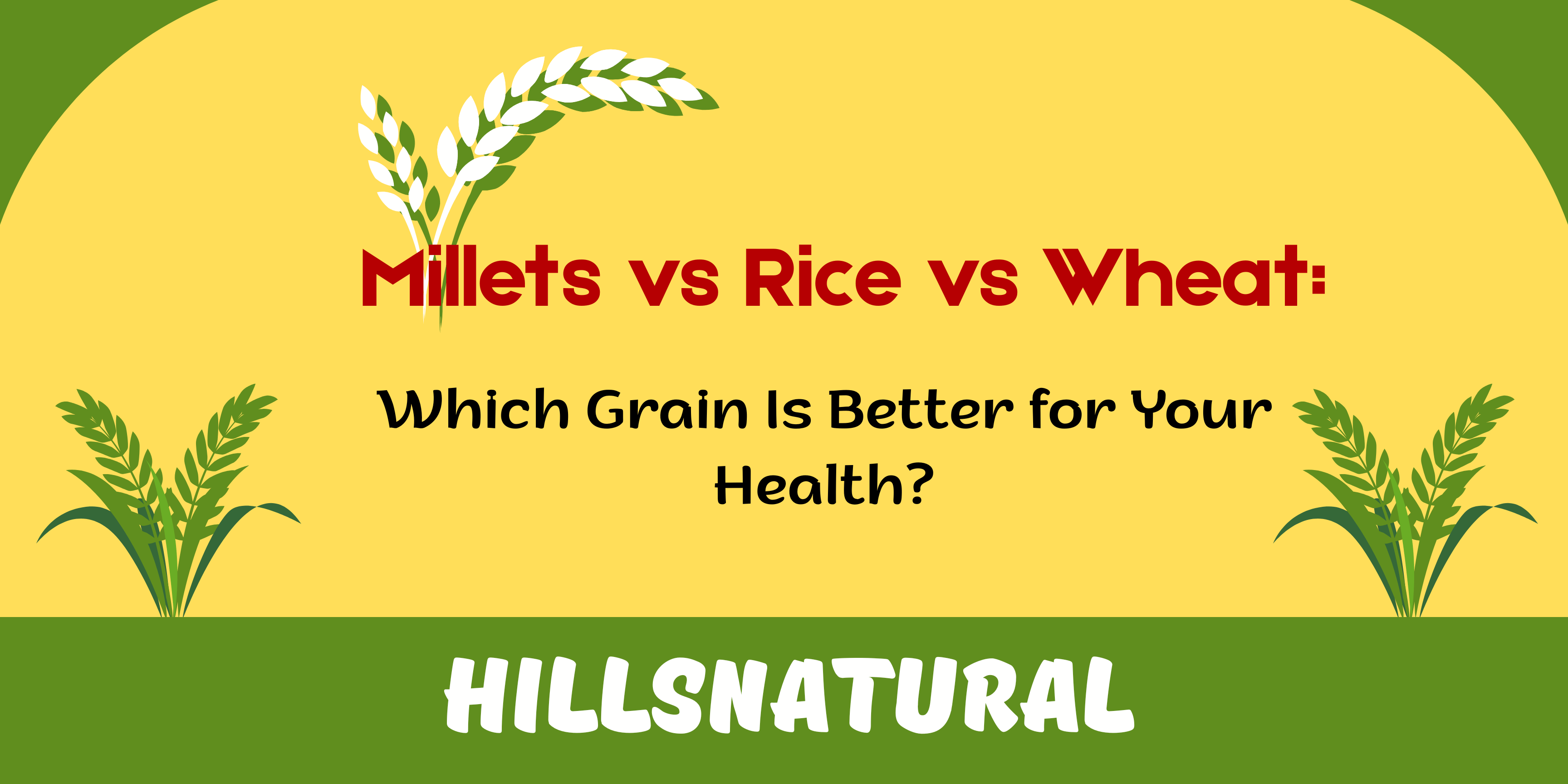
For decades, rice and wheat have dominated our plates, but millets are now gaining attention as a healthier, eco-friendly alternative. If you’ve ever wondered which is better — millets, rice, or wheat, this guide breaks it all down in terms of nutrition, health benefits, and sustainability.
🌱 What Are Millets and Why Are They Better?
Millets are ancient grains like ragi (finger millet), bajra (pearl millet), and jowar (sorghum) that are packed with fiber, protein, and minerals.
They’re also gluten-free, making them ideal for people with gluten intolerance.
👉 Want to dive deeper? Check out our detailed guide on
🔗 Unlocking the Health Benefits of Small Millets: The Power of Positive Millets.
✅ Benefits of Millets
- Rich in fiber for better digestion and weight control
- High in iron, calcium, and magnesium
- Low glycemic index → supports blood sugar management
- Sustainable crop → needs less water and grows in dry climates
🍚 Rice: The Comfort Food Staple
Rice, especially white rice, is a beloved staple across Asia. However, when comparing millets vs rice vs wheat, rice is often the least nutrient-dense due to its refining process.
🍙 Brown Rice vs White Rice
- Brown rice retains fiber and nutrients
- White rice is refined, offering quick energy but fewer vitamins
👉 If you’re considering switching from white rice, read this article:
🔗 Black Rice Benefits: Why Switch from White Rice for Better Health
✅ Benefits of Rice
- Easy to digest
- Quick source of energy
- Naturally gluten-free
🌾 Wheat: The Global Favorite Grain
Wheat is rich in carbohydrates, protein, and B-vitamins, but it contains gluten, which some people find hard to digest.
✅ Benefits of Wheat
- Provides long-lasting energy
- High in fiber (especially whole wheat)
- Great source of iron and zinc
⚠️ Drawbacks
- Refined wheat (maida) causes blood sugar spikes
- Gluten may cause digestive issues for some
🥗 Nutritional Comparison: Which Is Better — Millets, Rice, or Wheat?
| Nutrient (per 100g) | Millets | Rice (White) | Wheat (Whole) |
|---|
| Calories | 340 | 130 | 340 |
| Protein (g) | 9–11 | 2.7 | 13 |
| Fiber (g) | 8–12 | 0.4 | 10.7 |
| Iron (mg) | 3–9 | 0.2 | 3.9 |
| Glycemic Index | 40–55 | 70–90 | 54–70 |
| Gluten | ❌ None | ❌ None | ✅ Present |
📊 Conclusion: Millets offer a better balance of fiber, minerals, and low glycemic load, making them a superior choice for most diets.
🌍 Sustainability: Millets Lead the Way
When assessing which is better — millets, rice, or wheat — for the planet, millets win easily.
They need less water, grow in poor soil, and thrive with minimal fertilizers, making them the most climate-resilient grain.
🧘♀️ Which Grain Should You Choose?
- For Weight Loss: Millets
- For Easy Digestion: Rice
- For Balanced Nutrition: Whole Wheat
- For Gluten-Free Diets: Millets or Rice
💡 Pro Tip: Don’t stick to one grain! Rotate between millets, rice, and wheat to ensure a balanced and diverse diet.
🧾 Conclusion: The Final Verdict
When it comes to which is better — millets, rice, or wheat, millets emerge as the clear winner.
They’re nutrient-dense, support weight management, regulate blood sugar, and promote sustainable farming.
That said, each grain plays a unique role in a balanced diet — so enjoy them all in moderation!

